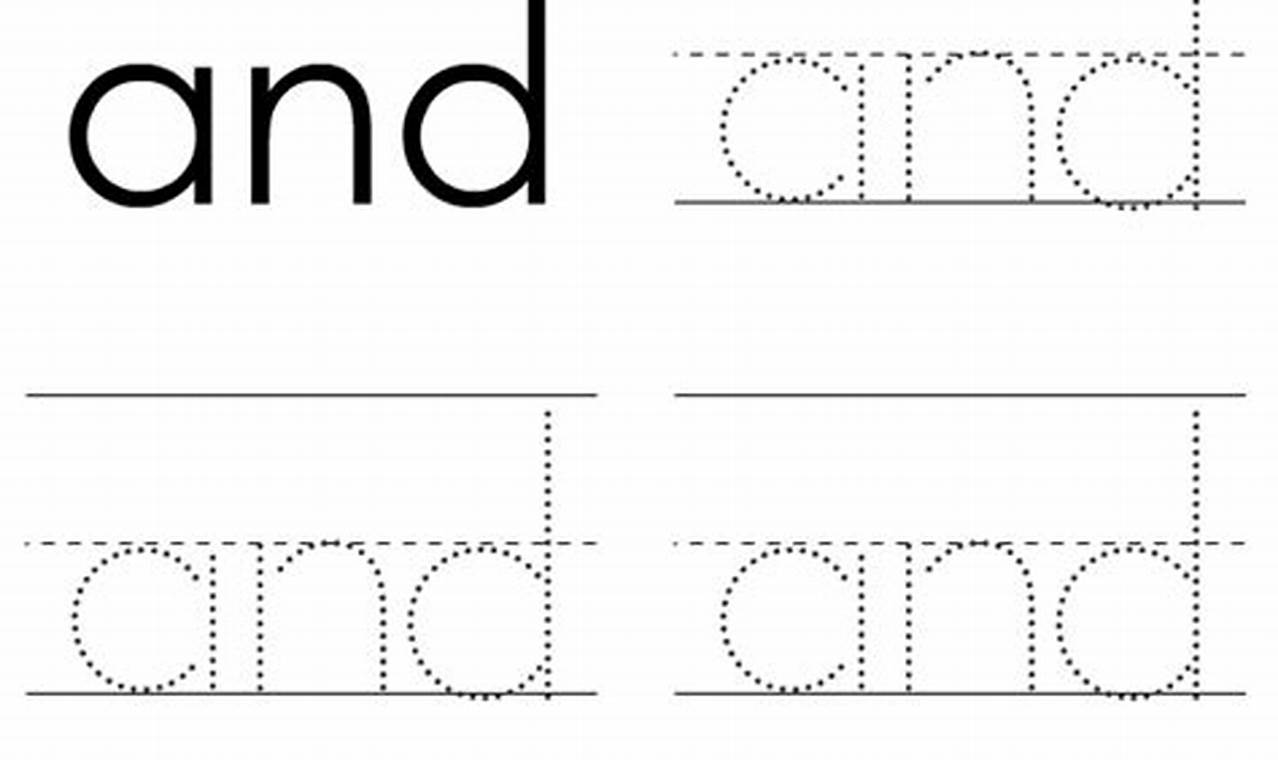Learning to recognize and write sight words is a foundational step in reading and writing development. These frequently used words form the backbone of most sentences, and mastering them early allows children to focus on comprehension rather than decoding each word individually. Introducing effective and engaging tools, such as sight word tracing worksheets, can greatly support this crucial learning phase.
The use of tracing worksheets for learning sight words offers several key benefits. Primarily, it enhances fine motor skills and hand-eye coordination as children practice forming each letter correctly. Additionally, it strengthens visual memory and letter recognition, making it easier for them to recall and identify the words in future reading and writing activities. This method also promotes independence and self-directed learning, fostering a sense of accomplishment.
This particular worksheet focuses on “sight word tracing for independent work.” It contains a selection of essential sight words, presented in a clear and traceable format. Each word is featured with a dotted-line outline, providing a guide for children to follow. The worksheet includes ample space for repeated practice, encouraging children to refine their letter formation and word recognition skills. The straightforward design minimizes distractions, allowing learners to concentrate solely on the task at hand.
To use this worksheet effectively, it is recommended to begin by explaining the purpose of sight words and their importance in reading. Provide the child with a comfortable writing tool, such as a thick pencil or crayon, to facilitate easy grip and control. Encourage them to trace each letter slowly and carefully, paying attention to the direction and formation of the lines. It can be helpful to say the word aloud while tracing, reinforcing the connection between the visual representation and its pronunciation. Breaking the activity into short, manageable sessions will prevent fatigue and maintain engagement.
For further learning and skill development, consider incorporating other resources from Kidtraces.com, such as alphabet tracing worksheets or word recognition games. Reading simple storybooks that feature the practiced sight words can also solidify understanding. Daily activities, such as writing thank-you notes or labeling household items, can provide real-world opportunities to apply newly acquired skills. Consistent and varied practice is key to mastering sight words and building a strong foundation in literacy.
In summary, sight word tracing worksheets are a valuable tool for promoting early literacy skills. They offer a structured and engaging way for children to practice letter formation, enhance word recognition, and develop fine motor skills. Download this worksheet today and encourage young learners to embark on their journey to reading and writing success. Explore more free worksheets on Kidtraces.com for a wide range of educational resources that support continuous learning and skill development.
